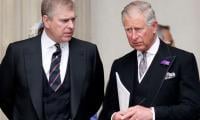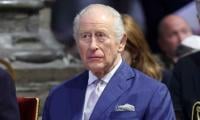KARACHI: Pakistan’s foreign exchange reserves dropped to their lowest level since December 2019 at $16.4 billion in the week that ended May 6, from $16.5 billion a week earlier owing to increasing current account and trade deficits, higher external debt payments and dried dollar inflows. The country’s reserves declined by $178 million or 1.1 percent on a week-on-week basis to stand at $16.376 billion, the central bank data showed. The central bank reserves also fell to a 23-month low.
The SBP reserves decreased by $190 million to $10.308 billion and it attributed the decline in reserves to outflows related to external debt repayments. Analysts estimate the SBP's latest reserves can cover 1.54 months’ worth of imports.
The reserves of commercial banks, however, inched up to $6.067 billion from $6.054 billion. Soaring twin deficits (current account and trade), lack of foreign currency inflows, and increasing foreign debt servicing obligations led to the fast depletion of forex reserves. The falling reserves put pressure on the currency as it plunged to an all-time low of 191.77 per dollar in the interbank market.
The delay in the revival of the International Monetary Fund bailout along with lack of pledges of funding from friendly countries is adding pressure to the foreign reserves and the local unit. Samiullah Tariq, the head of research at Pak-Kuwait Investment Company, said decline in reserves is nominal. “However, in terms of imports cover we are lower than 3 months, and we have to go into the IMF program to stabilise the reserves.”
Prime Minister Shehbaz Sharif, who took office last month after ousting the former premier Imran Khan, faces a battle to secure the revival of the IMF bailout as it’s a prerequisite for further financial assistance from other bilateral and multilateral creditors. The country needs quick foreign currency inflows to meet import and debt payments amid falling foreign exchange reserves. However, the present government will have to cut costly energy subsidies, which were introduced by the-then Khan’s government. It requires increasing petroleum and electricity prices to get the nod from the IMF for the release of the next loan tranche.
Sharif visited Saudi Arabia and the United Arab Emirates last week but didn’t manage to obtain pledges of immediate financing. Rollover of $2.3 billion Chinese commercial loans has also not been materialised yet. Pakistan and the Fund are likely to start policy level discussions on May 18 in Doha, which would depend on withdrawing fuel subsidies to resume the programme and extend its tenure by up to one year and size to $8 billion.
The government claims that the premier's visit to Saudi Arabia was successful and the government has asked for a package of $8 billion but no signal has been received from the Saudi government.















